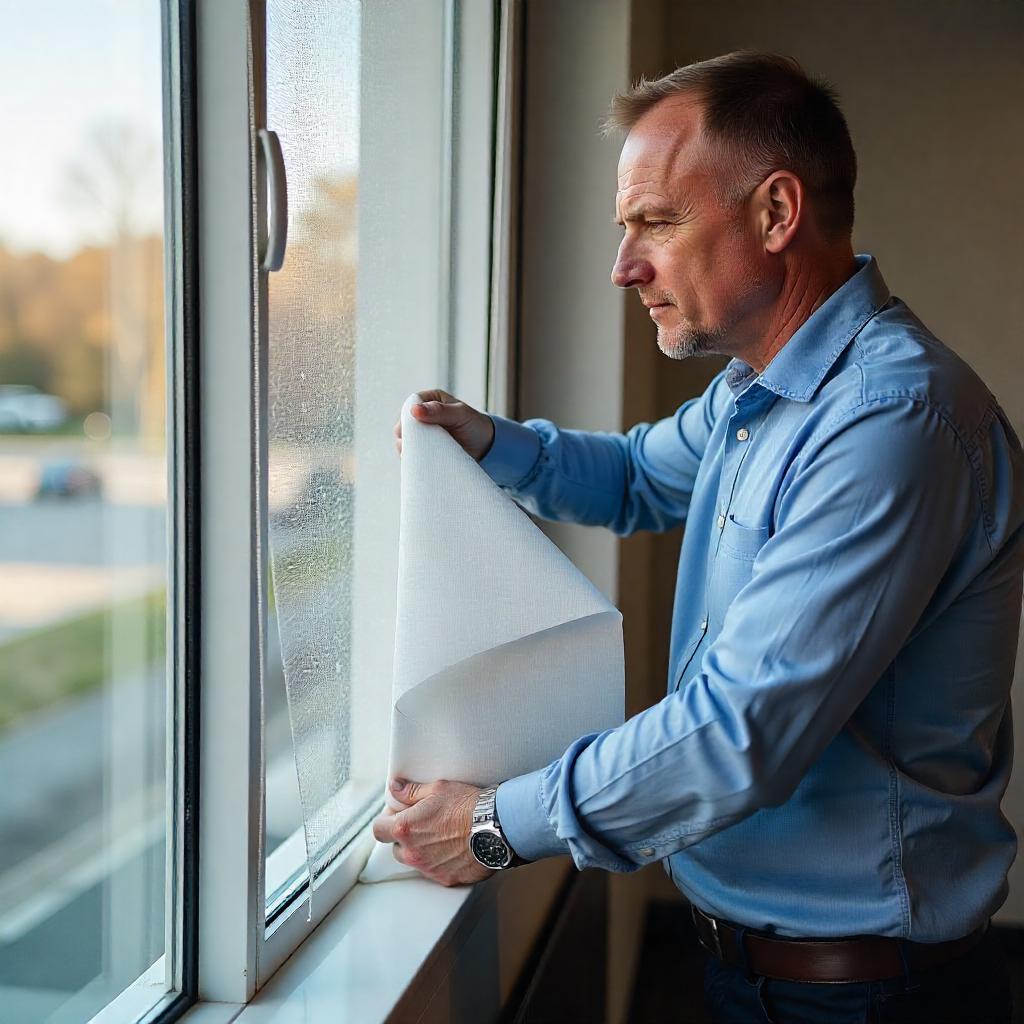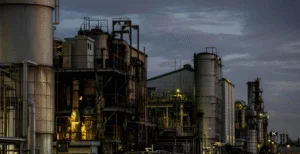Understanding Air Filter Fabrics
Air filter fabrics are special materials used in filtration systems. Their main job is to capture and remove tiny particles from the air. These particles can include dust, pollen, and even small germs. Air filter fabrics are made to be strong and effective in cleaning the air we breathe.
Choosing the right air filter fabric is very important. Different places and situations need different types of filter fabrics. The right fabric ensures that the air stays clean based on the specific needs of that environment.
Key functions and characteristics of air filter fabrics include:
- Particle Capture: They trap airborne particles to improve air quality.
- Durability: They are made to last a long time, even in tough conditions.
- Airflow: They allow air to pass through easily while blocking particles.
- Versatility: They can be used in many settings, from homes to factories.
- Efficiency: They work well at capturing various sizes of particles.
Types of Air Filter Fabrics
Types of air filter fabrics are important for keeping air clean. Different fabrics work better for different needs. Below is a table that shows some common types of air filter fabrics used in filtration systems.
| Type of Fabric | Description |
| Polyester | This fabric is strong and resists moisture. It works well in many settings. |
| Polypropylene | This fabric is light and has good chemical resistance. It is often used in industrial filters. |
| Fiberglass | This material is very durable and can handle high temperatures. It is great for heavy-duty air filters. |
| Cotton | This fabric is natural and good at trapping dust. It is often used in home air filters. |
| Activated Carbon | This fabric has special properties to absorb odors and gases. It is useful in places where smell is a problem. |
| HEPA (High-Efficiency Particulate Air) | This fabric can trap very small particles. It is used in hospitals and clean rooms to ensure air quality. |
Each type of air filter fabric has its own advantages. Choosing the right one depends on the specific air quality needs.
Applications of Air Filter Fabrics
Air filter fabrics have many applications in different industries. These fabrics help to clean the air by trapping dust, pollen, and other harmful particles. Here are some areas where air filter fabrics are commonly used.
- Manufacturing
In manufacturing, air filter fabrics keep the air clean in factories. They prevent dust and harmful particles from entering the workplace. This helps workers breathe easier and stay healthy. - Automotive
In the automotive industry, air filter fabrics are used in cars. They filter the air that goes into the engine. Clean air helps the engine run better and improves fuel efficiency. - HVAC Systems
Heating, ventilation, and air conditioning (HVAC) systems use air filter fabrics. These filters keep indoor air clean. They trap allergens and dust, making the air healthier for people to breathe. - Food Processing
In food processing, air filter fabrics ensure that the air is free from contaminants. This is important to keep food safe and healthy. Clean air helps maintain the quality of food products. - Pharmaceuticals
In the pharmaceutical industry, air filter fabrics play a critical role. They help create a clean environment for making medicines. This prevents contamination and ensures the safety of the products. - Electronics
Air filter fabrics are essential in electronics manufacturing. They keep the air free from dust that could damage sensitive equipment. Clean air helps produce high-quality electronic products. - Textiles
In the textile industry, air filter fabrics help control air quality. They filter out particles that can affect the quality of the fabrics. This leads to better products and fewer defects.
Air filter fabrics are important in many industries. They help create a cleaner and healthier environment for workers and consumers.
Key Properties of Effective Air Filter Fabrics
Key properties of effective air filter fabrics are important for filtering air. These properties help air filters work better. Here are the main properties:
- Filtration Efficiency: This means how well the fabric can trap small particles. A high filtration efficiency means it catches more dust and pollutants.
- Air Permeability: This is about how easily air can flow through the fabric. Good air permeability allows clean air to pass while blocking unwanted particles.
- Durability: This shows how long the fabric lasts. Strong fabrics can handle wear and tear without breaking down.
- Chemical Resistance: This property means the fabric can resist damage from chemicals. It is important for filters in places with harmful substances.
- Moisture Control: This refers to the fabric’s ability to manage moisture. Good moisture control prevents mold and bacteria growth.
- Thermal Stability: This means the fabric can handle high temperatures without losing its shape or effectiveness. It is important in industrial settings.
- Weight: A lighter fabric is easier to handle and install. However, it still needs to be strong enough for the job.
These properties together help create effective air filter fabrics that clean the air we breathe.
Advances in Air Filter Fabric Technology
Advances in air filter fabric technology have made a big difference in how we clean the air around us. These new developments help keep the air fresh and safe to breathe.
- One major advance is the use of nanofibers. Nanofibers are very tiny fibers that can trap small particles. They have a lot of surface area, so they catch more dust and allergens. This makes air filters more effective at cleaning the air.
- Another important change is the use of electrospun materials. These materials use electricity to create very fine fibers. These fibers can catch even smaller particles than regular filters. This means they can remove things like smoke and bacteria from the air.
- Smart filters are also becoming popular. Smart filters have sensors that can tell when they are dirty. They can send a message to your phone or other devices. This helps people know when to change their filters, keeping the air cleaner.
- Finally, some air filter fabrics are now made from recycled materials. This is good for the environment. These filters still work well and help reduce waste. Using recycled materials helps create a cleaner planet while keeping the air fresh.
These advancements in air filter fabric technology are important. They help improve air quality and make life better for everyone.
Selecting the Right Air Filter Fabric for Your Needs
Selecting the right air filter fabric is important for keeping the air clean. Different needs call for different types of fabrics. Here are some key points to think about when choosing the right air filter fabric:
- Purpose: Consider what you need the air filter for. Different fabrics work better for different tasks, like filtering dust or smoke.
- Material: Look at the material of the fabric. Common materials include polyester, fiberglass, and cotton. Each has its own strengths.
- Filtration Efficiency: Check the efficiency rating of the fabric. This tells you how well it traps particles. A higher rating means better filtration.
- Airflow: Think about airflow. The fabric should allow air to pass through easily while still trapping particles.
- Durability: Choose a fabric that lasts. Some fabrics can handle more wear and tear than others.
- Size and Shape: Make sure the fabric fits your filter system. It should match the size and shape needed for proper installation.
- Cost: Consider your budget. Some fabrics might be more expensive but offer better performance.
By keeping these points in mind, anyone can find the right air filter fabric for their needs.
Case Study: Intensiv-Filter Himenviro’s Advanced Filtration Solutions
Intensiv-Filter Himenviro is a global leader in industrial filtration solutions. They focus on sustainability and use advanced technology to create tailored solutions for cleaner air. Their products help industries follow environmental rules. By using their filtration systems, companies can reduce pollution and improve air quality. Intensiv-Filter Himenviro makes a positive impact on the environment while supporting different industries in their efforts to be more eco-friendly.
Maintenance and Care for Air Filter Fabrics
Air filter fabrics need proper maintenance and care. This helps them last longer and work better. Here are some guidelines to keep air filter fabrics in good shape.
- Clean Regularly: Clean air filter fabrics every few months. Dust and dirt can build up and reduce airflow. Use a vacuum or soft brush to remove debris.
- Inspect for Damage: Check the fabrics for tears or holes. Any damage can let unfiltered air through. If there are problems, replace the fabric right away.
- Follow Replacement Schedules: Replace air filter fabrics based on the manufacturer’s recommendations. This can be every 6 months to a year, depending on use and environment.
- Consider Environmental Factors: Dusty or humid areas can wear out air filter fabrics faster. If the environment is harsh, clean and replace them more often.
- Use Proper Cleaning Solutions: When washing air filter fabrics, use mild soap and water. Avoid harsh chemicals as they can damage the fabric.
- Dry Completely: After cleaning, make sure the fabrics dry completely before reinstalling them. Moisture can lead to mold growth.
- Store Properly: If not in use, store air filter fabrics in a dry, cool place. Avoid direct sunlight, as it can cause damage to the materials.
By following these tips, air filter fabrics can have a longer life and better performance.
Future Trends in Air Filter Fabric Technology
Future trends in air filter fabric technology show exciting changes. New materials and smart designs are making air filters better and more efficient. Here are some of the key trends and how they can impact air filtration.
| Trend | Description | Potential Impact |
| Nanofiber Materials | Nanofibers are very small fibers that can trap tiny particles. | They can improve air quality by filtering out more pollutants. |
| Smart Fabrics | Smart fabrics can monitor air quality in real-time. | They can alert users when filters need to be changed. |
| Sustainable Filtration Solutions | Eco-friendly materials help reduce waste and pollution. | They promote greener living by using less harmful materials. |
These trends show how air filter fabric technology is evolving. Each innovation aims to create cleaner air and a healthier environment.
Conclusion
Selecting the right air filter fabric is important. Different applications require different types of air filter fabrics. Each type has its own properties that can affect performance. It is crucial to understand these differences to make informed choices. Staying updated on new technology helps in choosing the best solutions.
Industry leaders like Intensiv-Filter Himenviro provide advanced filtration solutions. Their products support sustainability and meet environmental standards. Businesses should pay attention to their air filtration needs. They can consult experts like Intensiv-Filter Himenviro for the best advice.



